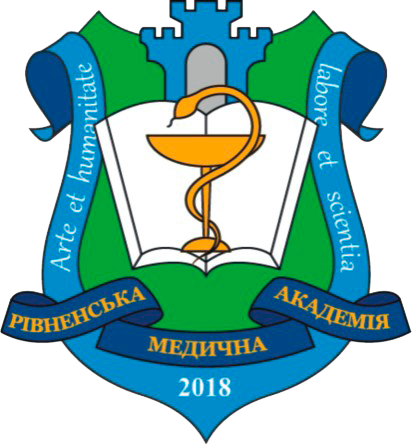THE EFFECT OF PHYSICAL REHABILITATION MEASURES ON THE QUALITY OF LIFE OF PATIENTS AND THE DYNAMICS OF COMPLICATIONS IN VARIOUS DISEASES OF THE LOWER EXTREMITIES IN THE SUBCOMPENSATION STAG
DOI:
https://doi.org/10.32782/health-2024.2.21Keywords:
varicose veins, physical therapy, muscle pumping action of muscles.Abstract
The aim of the study was to substantiate the effectiveness of targeted physical activity on the muscular system of the lower extremities in varicose veins to improve blood circulation, and to determine the effectiveness of physical therapy on the dynamics of patients’ quality of life and the incidence of trophic complications. The study was conducted at the Regional Center for Vascular and Endovascular Therapy of the Rivne Regional Clinical Hospital named after Yurii Semeniuk. All details of the pedagogical experiment were agreed with doctors and patients. Materials and methods. The pedagogical experiment involved 46 patients with clinically confirmed varicose veins of the lower extremities at the level of the lower legs at the stage of subcompensation. Half of the patients (control group, n=23) were treated according to the scheme adopted in this department (compression therapy, angioprotectors, venotonics), the other half (main group, n=23) – in addition to the above therapy, was engaged in daily walking – with elements of “venous gait” and physical exercises with an emphasis on tension of the soleus and calf muscles in order to push blood from them, according to the principle of the pump, towards the heart. Results. When assessing the dynamics of patients’ quality of life, all the indicators for which the assessment was conducted were better in patients of the main group, namely: pain decreased in 17 patients of the main group against 2 patients of the control group (by 65.2%); heaviness in the legs – 13 against 2 (by 47.8%); paresthesias and cramps – 7 against 0 (by 30.4%). According to objective visual signs, the clinical picture in patients of the main group, compared with the control group, also improved in all indicators, namely: the size of venous nodes and their tension decreased in 11 patients of the main group, against none in the control group (by 47.7%); the intensity of edema – 16 against 2 (by 69.9%); skin pigmentation and induration – 9 against 1 (by 34.7%). Conclusions. Physical activities on the muscles of the soleus and calves, such as venous walking and muscle-pumping exercises, significantly improve the subjective and objective manifestations of varicose veins of the lower extremities. This is not a cardinal solution to the problem, but they can be recommended as one of the options for improving the quality of life.
References
Moses S. L. A comparative study between aerobic exercise and onshore exercise on severity of pain and quality of life in women with varicose veins. IJMAES.2021.
Shadrina A.S., Sharapov S.Z., Shashkova T.I., Tsepilov Y.A. Large‑scale genetic study provides new insights into genetics and etiology of varicose veins. EurJHumanGenet. 2019; 27:1331‑2.
Elamrawy, S.; Darwish, I.; Moustafa, S.; Elshaer, N.; Ahmed, N. Epidemiological, lifestyle, and occupational factors associated with lower limb varicose veins: A case control study. J. Egypt Public Heal. Assoc. 2021, 96, 19.
Łastowiecka-Moras, E. Standing and sitting postures at work and symptoms of venous insufficiency results from questionnaires and a Doppler ultrasound study. Int. J. Occup. Saf.Ergon. 2021, 27, 963–969.
Nonthermal endovenous procedures for varicose veins: a health technology assessment. Ont Health Technol Assess Ser. 2021, 21:1–188.
Ibrahim A, ZeynepVildanOkudan A, Mehmet A, Vildan Y. Sleep quality and Laboratory Findings in Patients with Varicose Vein Leg Pain. JNeurosciNeurolDisord. 2023;7: 022–026.
Courtois MC, Zambon J. Várices e insuficiencia venosa crónica. EMC-Tratado de Medicina. 2019; 23(1): 1–11.
Raetz J, Wilson M, Collins K: Varicose veins: diagnosis and treatment. Am Fam Physician. 2019, 99: 682-8.
Amorese, A.J.; Ryan, A.S. Home-Based Tele-Exercise in Musculoskeletal Conditions and Chronic Disease: A Literature Review. Front.Rehabil. Sci. 2022. 3, 811465.
Silva J.L., LimaNeta A.G., Diniz N.R., Leite J.C. Effectiveness of therapeutic exercises for improving the quality of life of patients with chronic venous insufficiency: a systematic review. J Vasc Bras. 2021; 20: e20200248.
Бочковська Н.Л., Сатановська К.А. Використання фізичної реабілітації для покращення венозного відтоку крові при варикозному розширенні вен нижніх кінцівок. Науковий часопис НПУ ім. М. П. Драгоманова. Випуск 3 К (162), 2023.
Thibert, A.; Briche, N.; Vernizeau, B.D.; Mougin-Guillaume, F.; Béliard, S. Therapeutic Patient Education Working Group of the French Society of Vascular Medicine. Systematic review of adapted physical activity and therapeutic education of patients with chronic venous disease. J.Vasc.Surg.VenousLymphat.Disord. 2022.10, 1385–1400.
Мальцева О.Б. Варикозна хвороба: особливості фізичної реабілітації. Матеріали Всеукраїнської науково-практичної інтернет-конференції «Вітчизняна наука на зламі епох: проблеми та перспективи розвитку»: зб. наук. Праць (Переяслав-Хмельницький, 16 лютого 2018). 2018. Вип. 40. C. 215–218.
Maeseneer M.G, Kakkos S.K, Aherne T, et al. Editor’s Choice–European Society for Vascular Surgery (ESVS) 2022 Clinical Practice Guidelines on the Management of Chronic Venous Disease of the Lower Limbs. Eur J VascEndovasc Surg. 2022; 63(2) :184–267.
Попадюк М., Говоров О., Соколюк М., Яковишен Р. Фізична терапія при варикозному розширенні вен. Збірник статей учасників тридцять першої всеукраїнської практично-пізнавальної конференції «Наукова думка сучасності і майбутнього» (25 вересня– 4 жовтня2019 р.). С. 19–21.
Amorese, A.J.; Ryan, A.S. Home-Based Tele-Exercise in Musculoskeletal Conditions and Chronic Disease: A Literature Review. Front.Rehabil.Sci. 2022, 3, 811465.
Guürdal Karakelle, S.; Ipek, Y.; Tulin, O.; Alpagut, I.U. The efficiency of exercise training in patients with venous insufficiency: A double blinded, randomized controlled trial. Phlebology. 2021, 36, 440–449.





